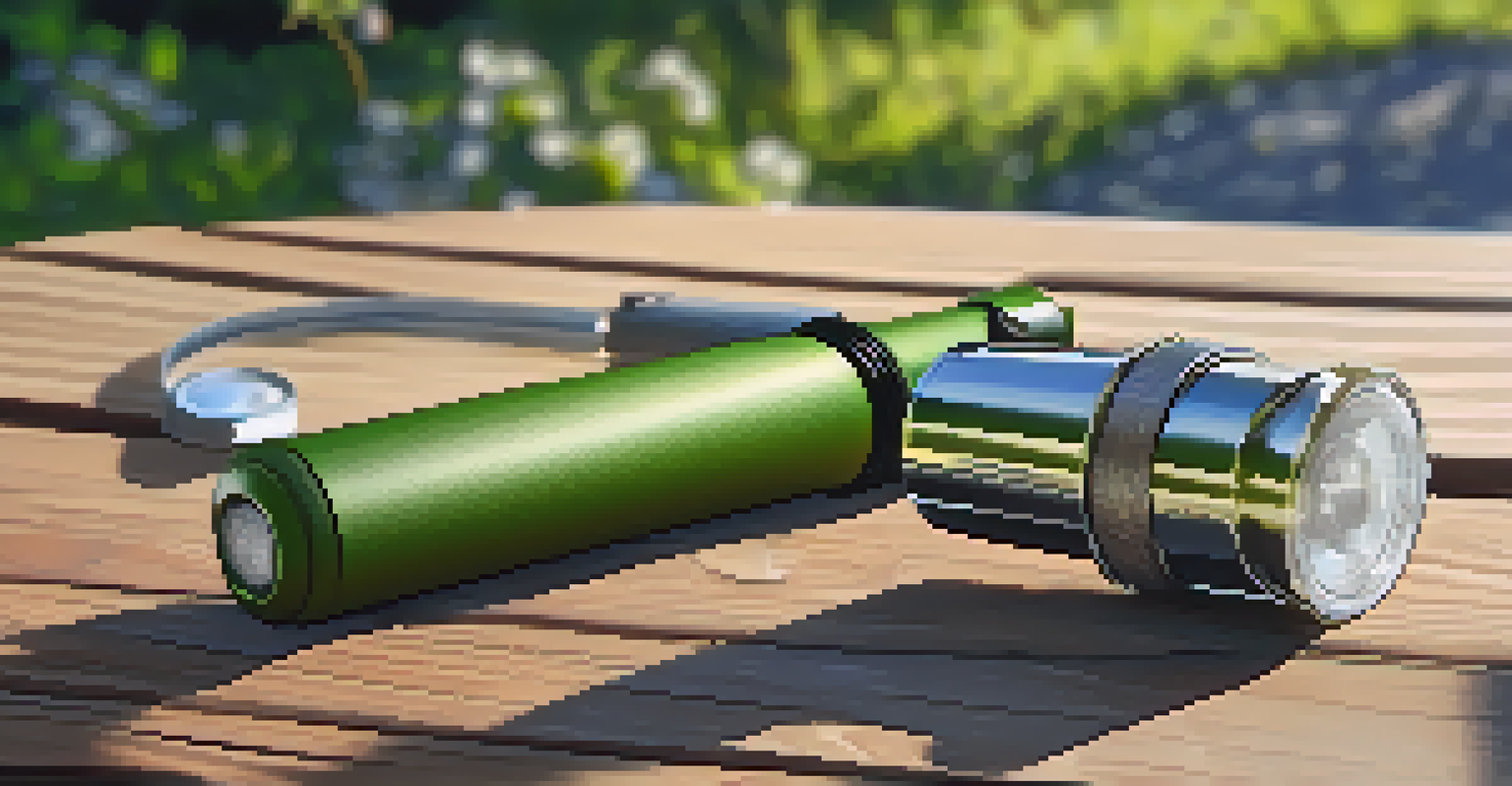Essential Self Defense Techniques for Outdoor Enthusiasts

Understanding the Importance of Self Defense in Nature
When you're out in nature, whether hiking or camping, it's crucial to be aware of your surroundings. The tranquility of the outdoors can sometimes mask potential dangers, making it vital to know how to protect yourself. Understanding self-defense not only boosts your confidence but also prepares you for unexpected situations.
The best defense is a good offense.
For outdoor enthusiasts, self-defense isn't just about handling confrontations with people; it also includes being prepared for wildlife encounters. Knowing how to react in these situations can mean the difference between a close call and a serious incident. Therefore, being equipped with self-defense techniques is a key part of enjoying your outdoor adventures.
Moreover, embracing self-defense practices fosters a sense of community among fellow outdoor lovers. Sharing experiences and techniques with others not only enhances your knowledge but creates a network of support as everyone looks out for each other. In essence, self-defense in nature is as much about personal safety as it is about communal responsibility.
Situational Awareness: Your First Line of Defense
Situational awareness is the ability to perceive and interpret your environment, and it's your first line of defense. By staying alert to your surroundings, you can identify potential threats before they escalate. This means paying attention to unusual behavior from people or signs of wildlife nearby.

A good practice is to regularly scan your environment and notice details—like the sounds of footsteps or the rustling of bushes. If something feels off, trust your instincts and be prepared to remove yourself from the situation. This proactive approach can often prevent conflicts from arising in the first place.
Self-Defense Boosts Outdoor Safety
Understanding and practicing self-defense techniques enhances personal safety and confidence while enjoying nature.
Additionally, being aware of your surroundings helps you make informed decisions, such as choosing safe trails or campsites. It allows you to enjoy the beauty of nature while maintaining a sense of caution. Ultimately, enhanced situational awareness keeps you one step ahead and significantly increases your safety.
Basic Physical Self Defense Techniques to Learn
Knowing a few basic self-defense moves can empower you in critical situations. Simple techniques, like how to break free from a wrist grab or how to deliver a strong knee strike, can be effective in deterring an attacker. These skills don’t require extensive training and can be learned quickly, making them accessible for everyone.
In any situation, the first thing you need to do is to be aware of your surroundings.
Practicing these techniques regularly helps build muscle memory, ensuring that you can react instinctively when needed. Consider joining a self-defense class or watching instructional videos to familiarize yourself with these moves. The more you practice, the more confident you'll feel when faced with a potential threat.
Moreover, learning self-defense techniques can be a fun activity to do with friends or family. It fosters teamwork and builds trust as everyone learns to protect one another. This shared experience not only enhances your skills but also encourages a supportive community around self-defense.
Using Everyday Objects as Self Defense Tools
Not every outdoor enthusiast has a self-defense tool like pepper spray on hand, but everyday objects can be effective substitutes. Items like a sturdy flashlight, a walking stick, or even a backpack can serve as defensive tools when needed. The key is to think creatively and recognize the potential of what you have.
For instance, a flashlight can be used to temporarily blind an attacker, giving you precious seconds to escape. A walking stick not only aids in hiking but can also be used to keep distance from a threat. By being aware of your surroundings and the items at your disposal, you can turn the ordinary into a means of protection.
Situational Awareness is Key
Being aware of your surroundings allows you to identify potential threats and make informed decisions to stay safe.
Additionally, practicing how to use these items in a self-defense scenario can increase your readiness. The more comfortable you are with your tools, the more likely you are to use them effectively. Remember, the goal is to create distance and escape, not to engage in combat.
Establishing a Safety Plan with Your Group
When heading outdoors with friends or family, establishing a safety plan is crucial. This plan includes identifying roles, communication methods, and emergency contacts for your group. Discussing these aspects before your adventure ensures everyone knows what to do if a situation arises.
Include specific safety protocols, like how to react if someone gets lost or if an emergency occurs. Make sure to choose a designated meeting point, and share your plans with someone who isn't part of your group. This way, if something goes wrong, there’s a clear approach to follow.
Moreover, practicing your safety plan can help reinforce it. By running through different scenarios together, you ensure that everyone feels prepared and confident. This teamwork not only enhances your safety but also strengthens relationships as you look out for one another.
The Role of Communication in Self Defense
Communication is a powerful tool in self-defense situations, both verbally and non-verbally. Being assertive can often deter potential threats, as confidence can signal that you are not an easy target. Practicing clear and firm communication can help you express your boundaries effectively.
In group settings, maintaining open lines of communication is vital. Regularly checking in with one another during outings ensures everyone feels safe and accounted for. This practice not only keeps everyone informed but also fosters a supportive environment where concerns can be shared openly.
Communication Enhances Group Safety
Establishing clear communication and safety plans within your group fosters a supportive environment and prepares everyone for emergencies.
Additionally, learning how to use your voice in a crisis can be crucial. Shouting for help or using a loud, commanding tone can attract attention and potentially scare off an attacker. Remember, the more you practice communication skills, the more instinctive they will become when needed.
Post-Incident Actions: Staying Safe After a Threat
Experiencing a threatening situation can be incredibly unsettling, no matter the outcome. After such an event, it's essential to ensure your immediate safety first. Move to a secure location, whether that's a crowded area or a safe spot with trusted people nearby.
Once you're safe, take time to process the incident. Discussing your experience with friends or family can help you process your emotions and assess your feelings. It's essential to recognize that it's normal to feel shaken and that seeking support is a positive step.

Finally, consider reporting the incident to authorities. This step not only helps you regain a sense of control but can also aid in preventing similar situations for others. Remember, your safety and well-being are paramount, and taking action after an incident is part of the self-defense process.